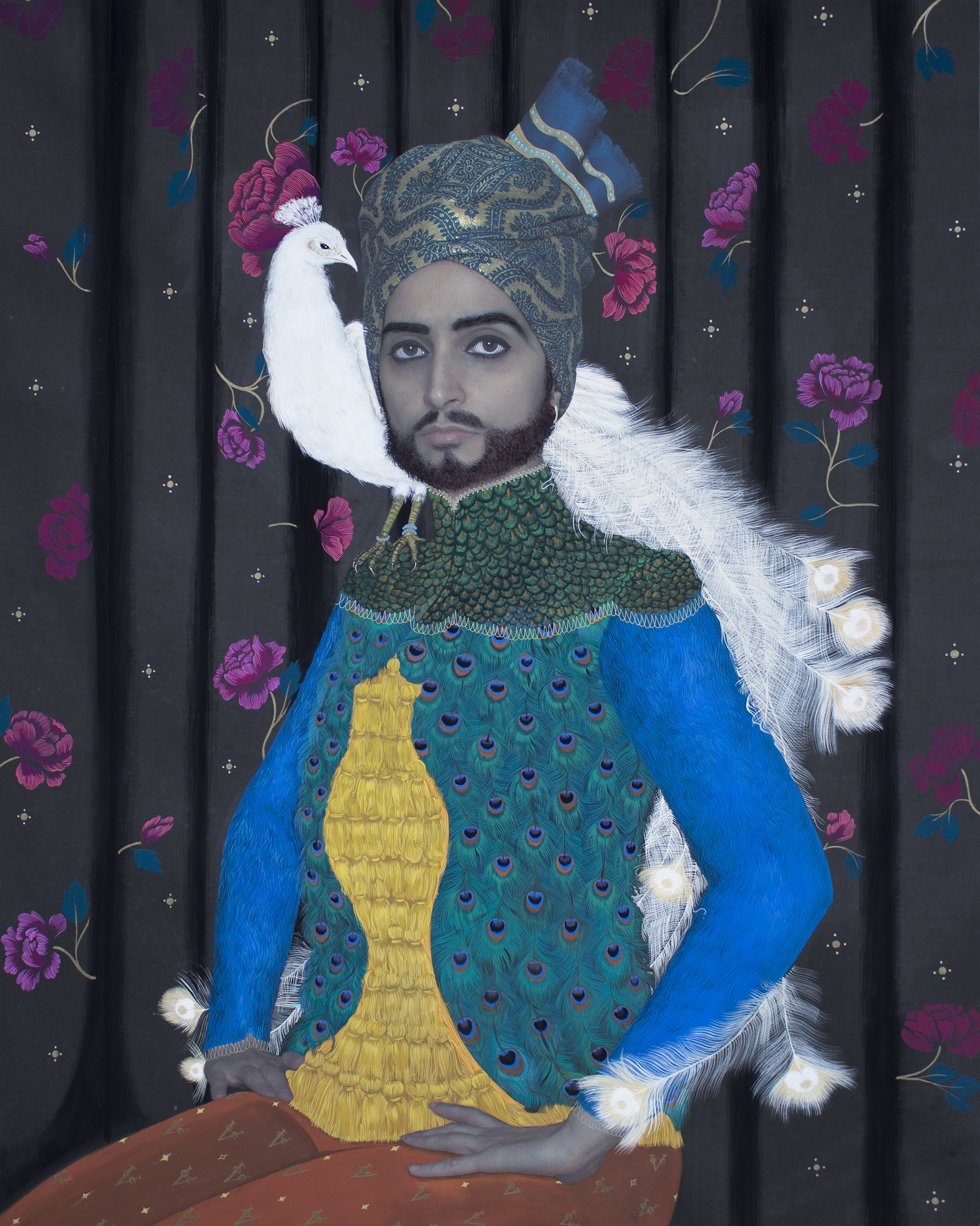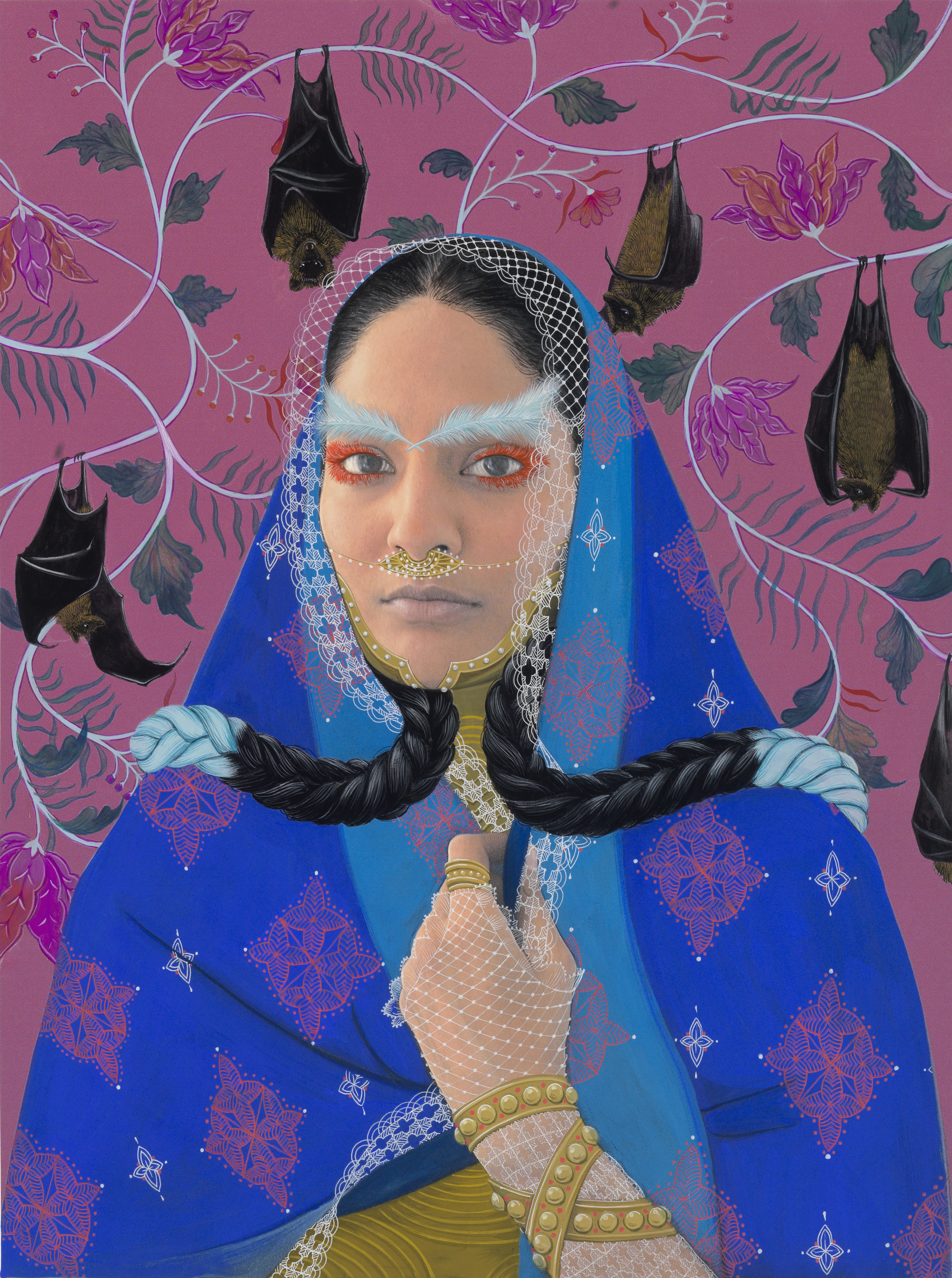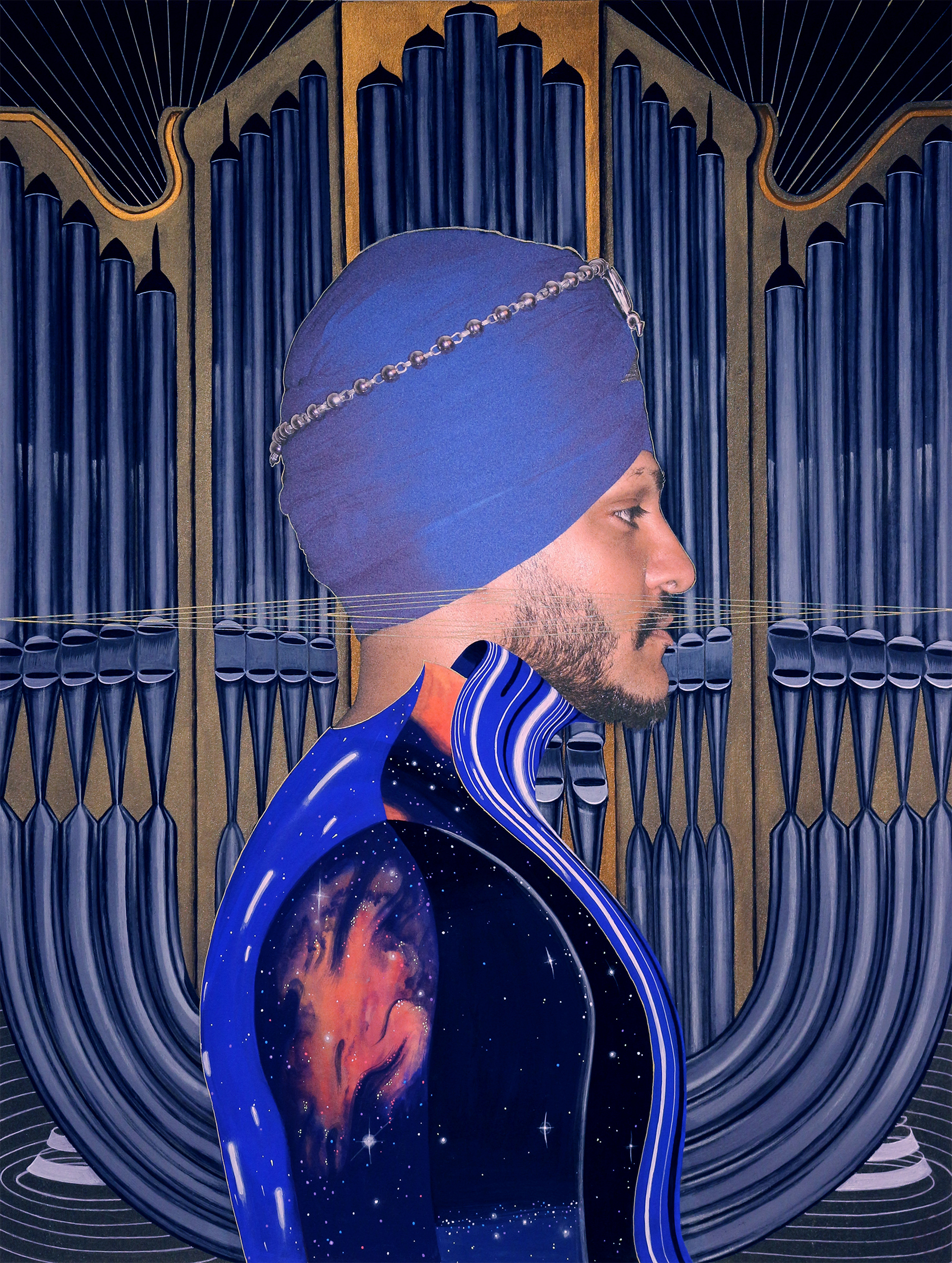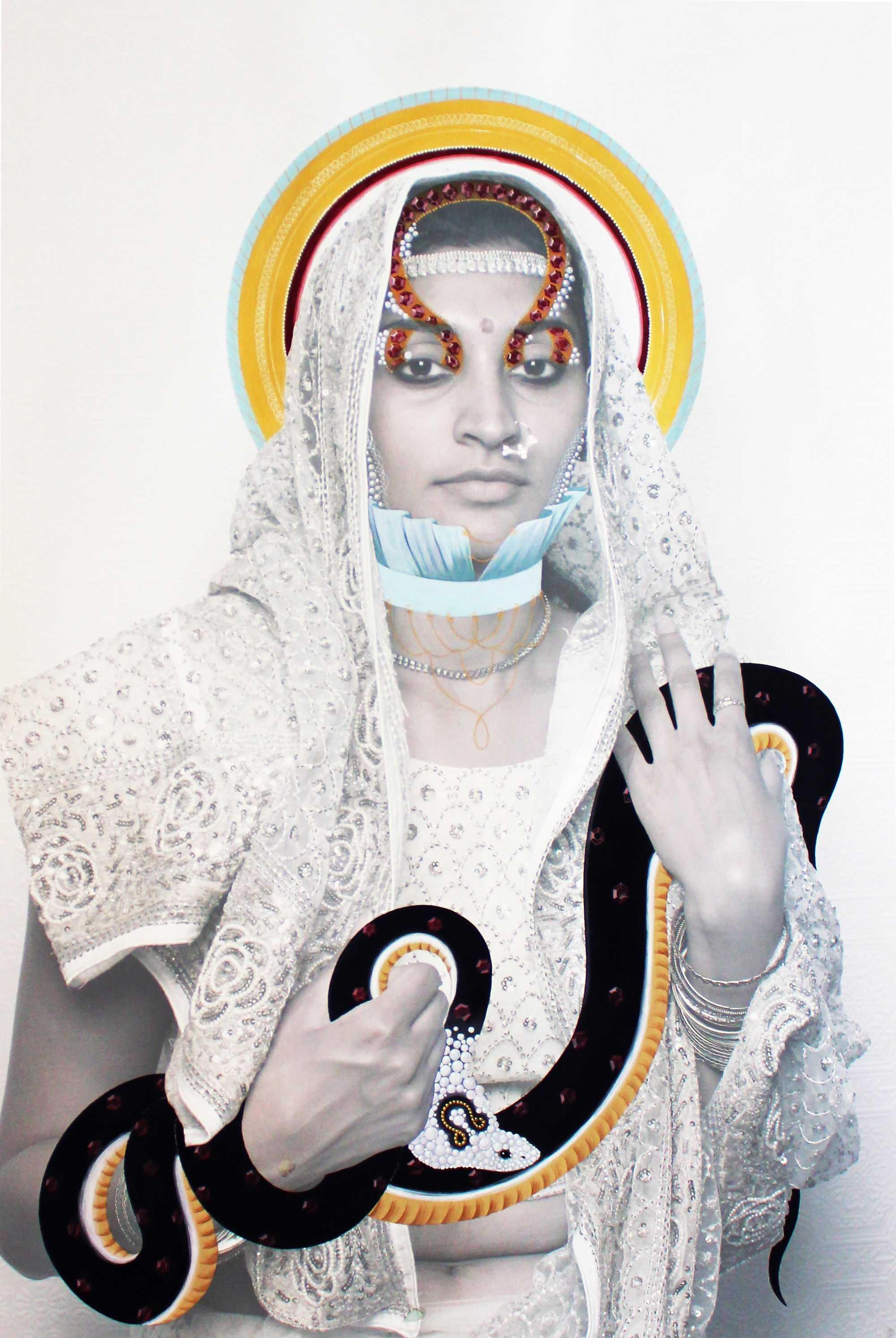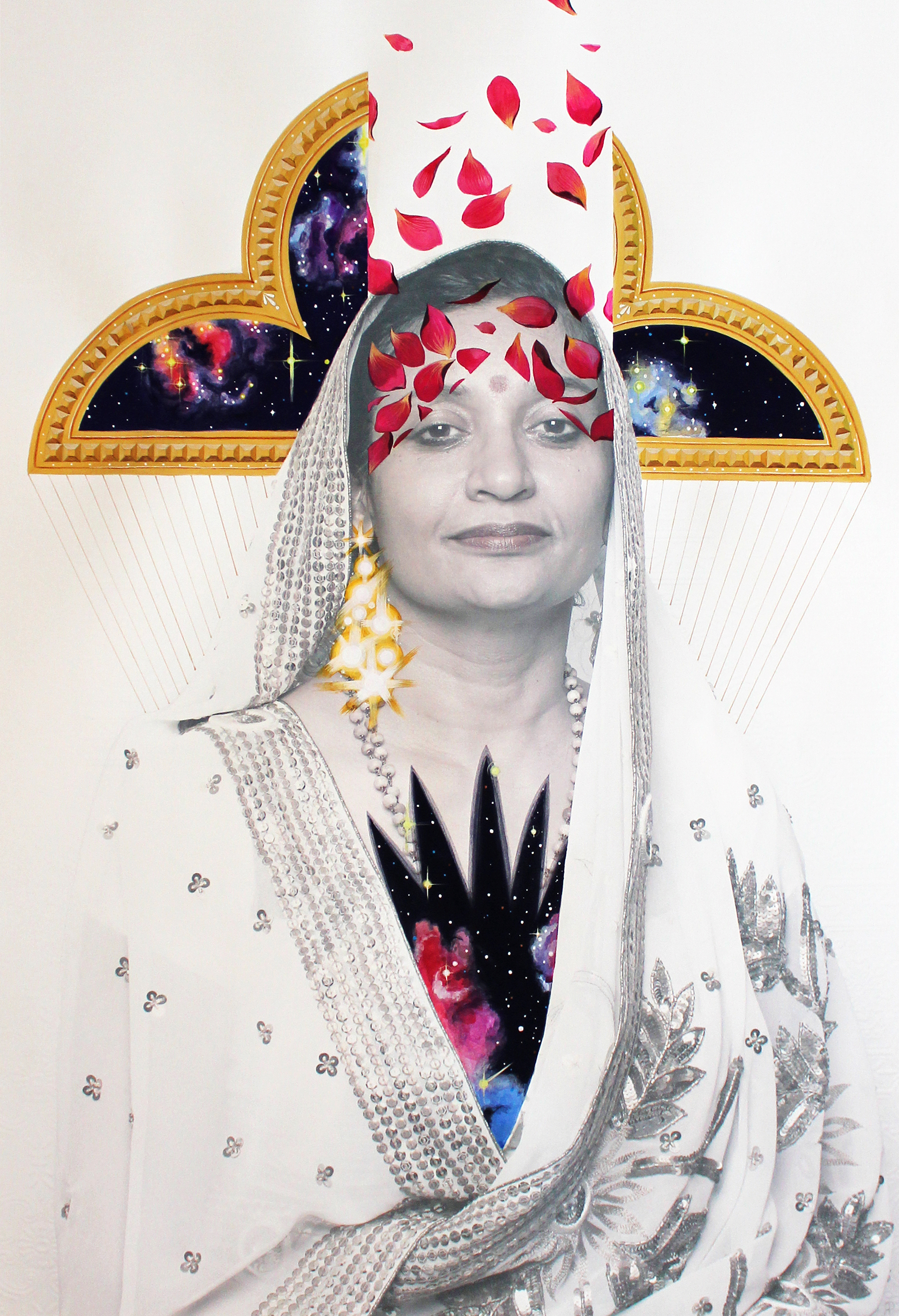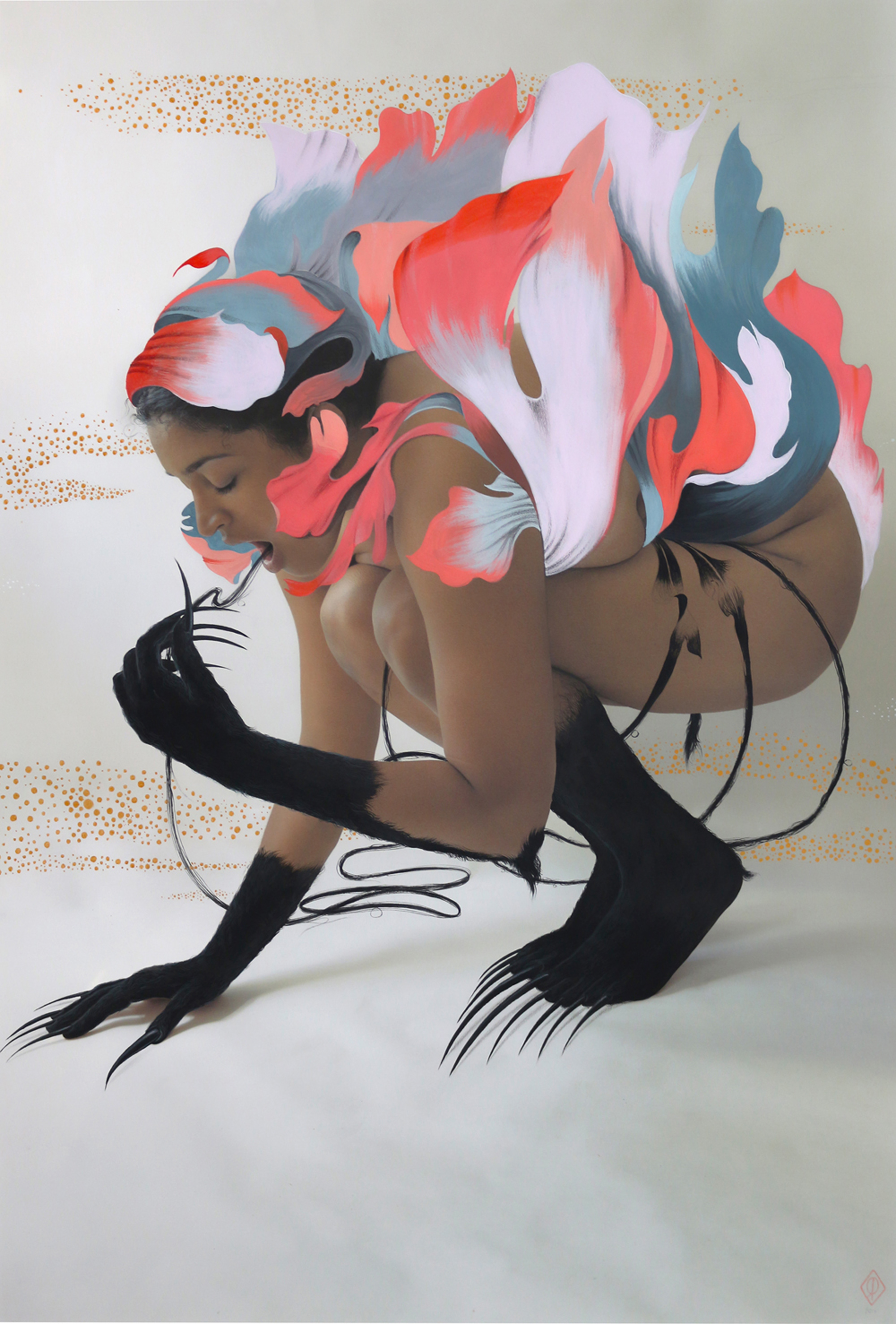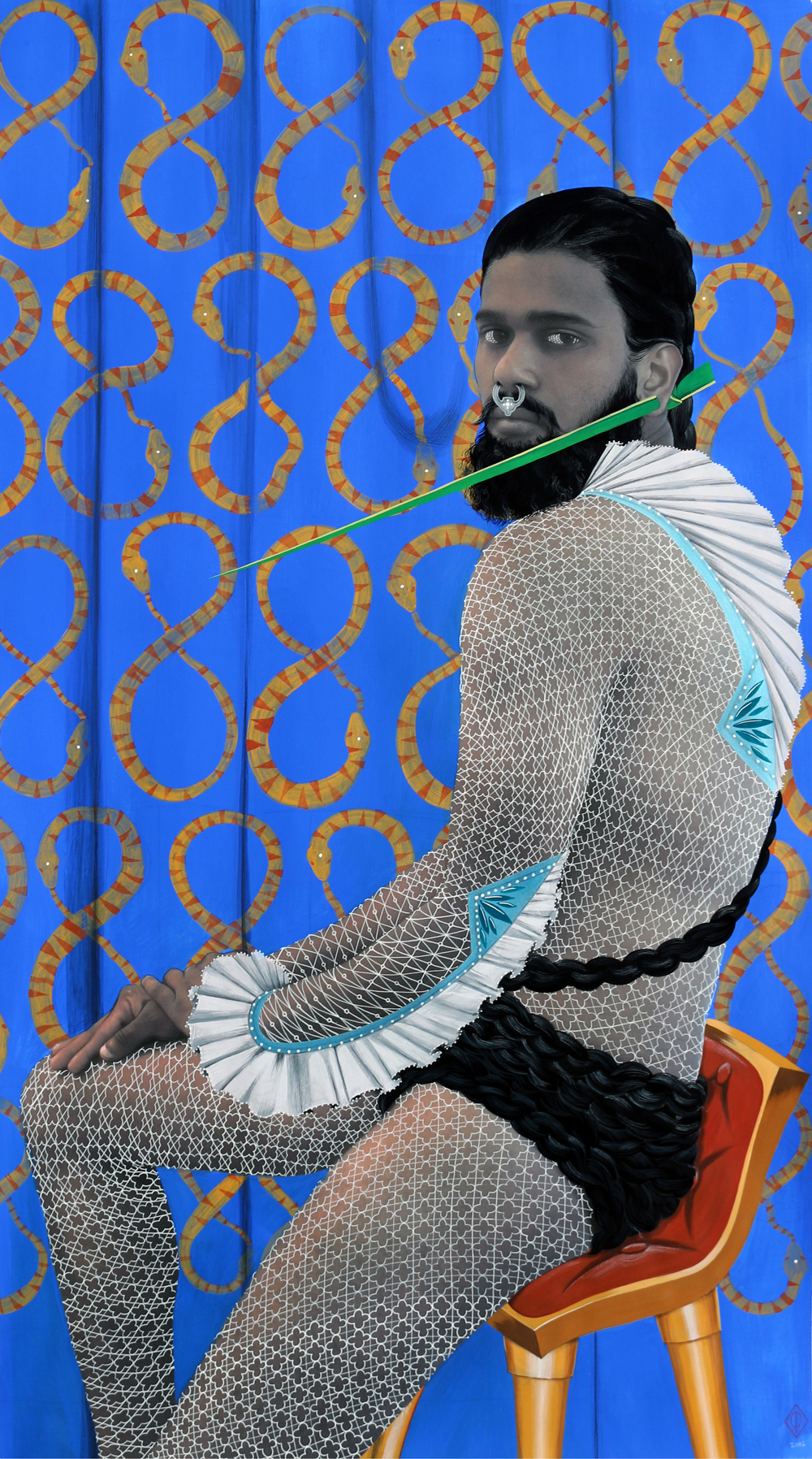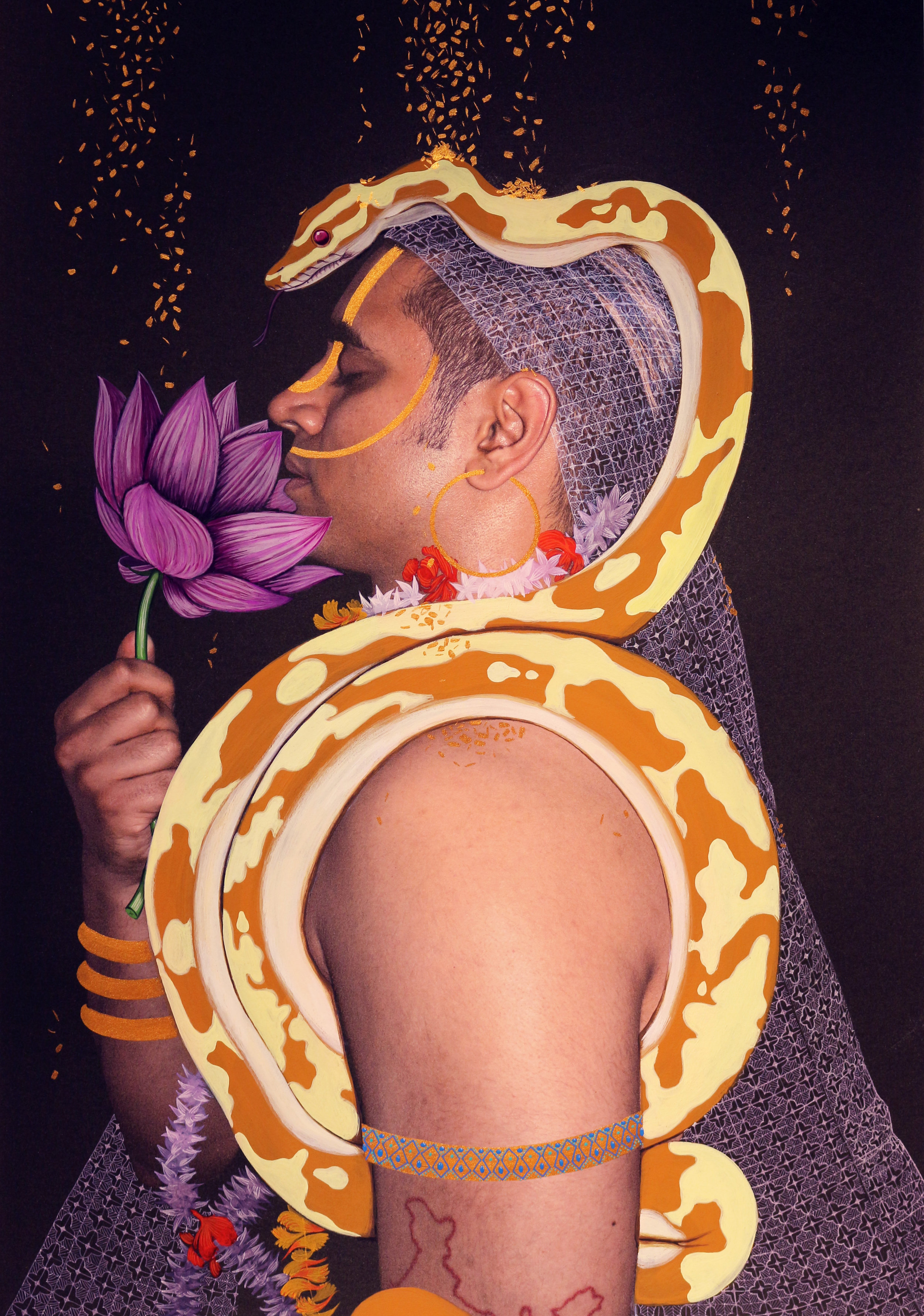EMbellished photography: 2014 - 2018
Interview with Jyoti Dhar in regards to the work:
JD: In a few lines, could you please tell us about how you first came to use photography in your art practice? How has your relationship with it developed over time? What do you feel it allows for?
RP: When I was first returning to my practice after having my daughter, I visited an exhibition at the Royal Ontario Museum curated by Deepali Deewan called The Art Of The Embellished Photograph. While I had figured this medium existed I had never really seen them in person and they had a striking magical beauty about them. The history of the medium is also rooted in legacies of royal spectacle and making impossible worlds for the exalted and untouchable. But the medium itself struck me as a sort of proto-photoshop, where you don’t know where the photo ends and the painting begins. And the narrative itself doesn’t care about that. It floats in another dimension. In terms of my relationship with the work made for SFG and the way I think about it now, of course it’s evolving. I look back at the work I made and wonder about its place in terms of critique vs ornamentation, but I think it did well either way. For me it created an opportunity to analyze my relationship with colonial ideology, being an immigrant in a colony, and revisiting my colonized country of birth. In North America, where I live and make my work, the critique despite the ornamentation and embellishment is understood and felt. Abroad, I would say it has been more about just the aesthetics. So it could be that it is a diasporic perspective that is more wholly received in cities or hubs where there are many immigrants and some more postcolonial theory discourse being thrown around.
JD: Can you tell us about how the work in Embellished Lens first came about? What was behind the decision to place yourself in the work? Can you tell us a bit about your interest in this kind of portraiture?
RP: What I wanted to do with the medium was contemporize it because I found something in it that was inherently surreal, which was the direction I wanted to take the work in. When you take portraits of monarchs and aristocrats and push the element of luxury or divinity even, in some cases, by combining what was then a new technology (photography) and painting in the illustrative miniaturist style, what happens is similar to manufacturing a gold-plated rolls royce, or a bejewelled carriage. The intimidation of the masses becomes a service to an empire made by artisans and craftspeople working in the royal courts. It shows a certain subservience and participation in a cycle of class-divide by both creator and consumer. That is what was behind me performing the gaze of the monarch in Greed. I wanted to make these works that smashed together these problems with a high-gloss tone of celebrity and fashion culture, and by playing inside these worlds I can ultimately say something about them. I think it highlights a parallel between these times which we think are disparate but really aren’t, and that capitalism and colonial rule have a lot in common, and one could also say that legacies of resource extraction, class divide and land ownership laws from colonial rule are inherent in the systemic structures of capitalism.
JD: Can you tell us about the play between identity, divinity and masculinity in the work? Are these more a critique of the past or the present? Can you tell us more about your take on 'neo-exoticism' and how you feel it plays out in this work?
RP: I don’t know if any particular gender normatives play out in the series other than in the Royal Couple, although the performativity of powerful men and taking that on was a part of making that diptych in shooting for it. I definitely keep an eye to both religious-icon portraits and the poses/body language of royal portraiture, since objects for empires and the purposes they serve are central to the embellished photography work. In creating divine untouchability and exaltation in visual representations of the rich, powerful and pedigreed, what happens is that the poor are pushed back and the powerless stay quiet in reverence. A great example are say movie stars who walk free after killing pedestrians with their vehicles; the cult of celebrity is a parallel mechanism to the big machines that turn politics and corporate rule. They all turn at the same stroke. It’s this propaganda machine that I hope to comment on by both making critical work about it as well as subverting it by placing people I know in those seats of power. The way neo-exoticism works is super complex and includes the recycling of visual culture and fashion sold to western markets, the reclamation of such culture, and regurgitation of mashups of the product’s creation and consumption, among other things. It was definitely present in works like the Yoginis series were the intention was to glamorize the holistically-marketed coloured body for itself as opposed to for the white gaze. In the embellished photograph series; Maharanis, Maharajas and so on; the taken is given back and indeed arranged together with the stances, motifs and ornamentation of colonizing empires. That is to say, neo-exoticism and it’s dynamics definitely take place in the work and they play a part in both the criticism around representation of coloured bodies, as well as the diasporic formation of identity in reclaiming histories, herstories and our stories on a victorious path to power and a hand in forming more structurally integral societies.

